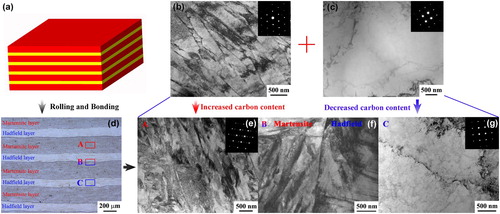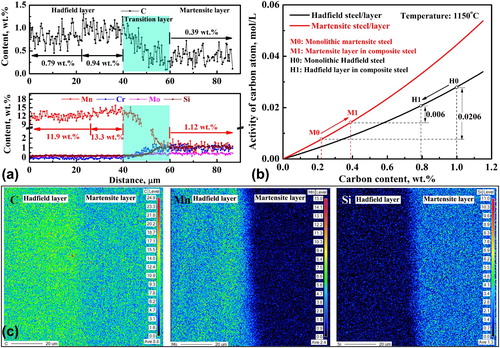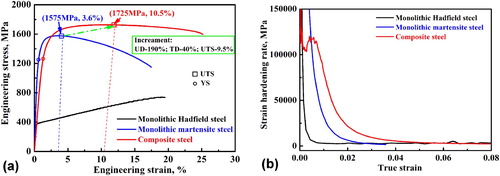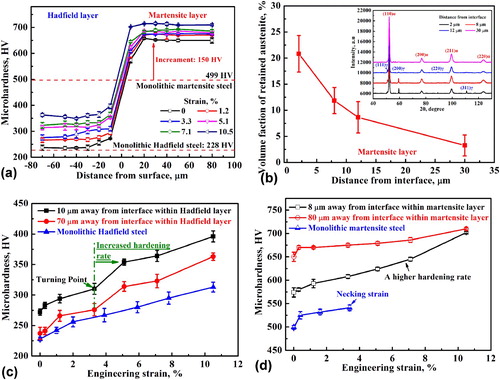Figures & data

Figure 1. Stacking structure in the box (a), microstructures of monolithic steel (b and c) and composite steel (d–g). Martensite steel (b) and Hadfield steel (c), optical observation on composite steel (d), and TEM microstructure of the martensite layer (e), interface region (f), and Hadfield layer in accordance with the square regions marked A, B, and C in d.

Figure 2. EMPA results on the content of alloying elements between neighbor layers (a and c) and calculated carbon activity using Thermal Calc software (b).



